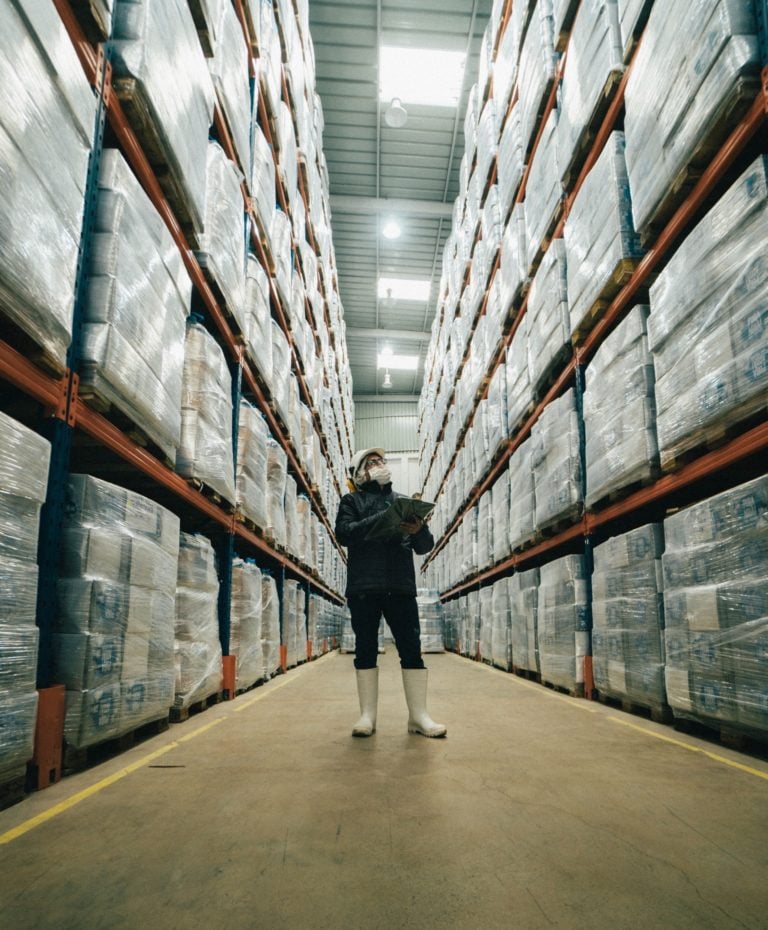Of course, you want to do all you can to ensure the health and safety of all your employees working throughout the supply chain. That’s why, in this article, we’re showing you 3 ways you can champion hygiene across your supply chain, adhering to proper sanitation amidst the ongoing pandemic and beyond.
Improve your inventory management
Your inventory may not be the most obvious hygiene concern in your warehouse, but the fact of the matter is that your stock can be a hotspot for bacteria and germs. Why? The reasons are twofold:
- Products have been exposed to multiple locations and multiple handlers
- Products that have been in your warehouse for considerable time are at greater risk of contamination
With this in mind, we recommend implementing a FIFO (first in, first out) operation in your supply chain management. This will entail keeping track on inventory dates to optimise stock flow, ensuring items that arrived first are the first to be dispatched. This will allow you to reduce the amount of time goods spend on the shelf, minimising the likelihood of surface contamination in the process.
Know the ins and outs of PPE
PPE has been a hot topic of conversation in recent months, and for good reason.
In warehouse environments, PPE is crucial in assuring the protection of employees. It’s important to note the current regulations surrounding PPE to ensure you’re adhering to guidelines and utilising protective equipment effectively. These include:
- A proper assessment to ensure PPE is fit for purpose
- Adequate maintenance and storage
- Comprehensive instruction on safe use
To assess the suitability of your PPE for your requirements, you’ll need to be able to identify the different hazards employees are exposed to, as well as which PPE is best suited to tackle that hazard. For conclusive guidance, we always recommend seeking specialist guidance from your supplier or, failing that, the WHO website.

There’s a few additional, less obvious factors you’ll need to consider when evaluating your PPE’s suitability, too:
- Does PPE add any new risks? (eg. does it make communication or visibility more difficult in tasks where this is key?)
- Can the PPE be adjusted to fit the wearer properly?
- If wearing multiple items of PPE, are these compatible without causing hindrance?
While availability and cost have been major talking points amidst the ongoing pandemic, it is of course recommended to always source the highest quality PPE you can. This means supplying equipment which is CE marked, in accordance with the 2002 Personal Protective Equipment Regulations.
When it comes to storing your PPE, having the right know-how is key to ensuring its effectiveness and longevity. Improper storage can result in the deterioration of your equipment, compromising staff safety and ultimately costing your business more money.
So, ensure you’re keeping PPE in a clean and dry place that’s easily accessible to alleviate any risk of falling and damage. To further minimise the risk of damage, it’s best not to store your PPE alongside any consumables or machinery. Storing PPE in practical lockers is your best bet, enabling storage that’s both quickly accessible, secure and safety conscious.
Conduct thorough health and safety training
Perhaps no term causes more eye rolls than ‘health and safety’, but the fact remains that adequate risk assessments are vitally important in supply chain environments – especially amidst a pandemic.
With this in mind, briefing staff on appropriate health and safety measures through thorough training should be seen as a necessity. While it’s likely this has already been a staple of your warehouse operations, it’s important to revisit training in relation to updated COVID-19 guidelines on aspects such as social distancing.
This is new normal for all of us, so it’s worth investing in ways to keep these new best practices at the forefront of employees’ minds. This doesn’t have to be a costly expenditure. Something as simple as signage and floor stickers to remind workers of restrictions and hazards can serve as regular reminders of health and safety regulations.
Hygiene has no doubt been an important factor in your warehouse operations to date, but in 2020, it’s quite simply vital that these considerations remain at the forefront of your supply chain management. By following the tips and advice above, we hope your operations keep running smoothly, all while ensuring you’re providing a healthy and sanitary working environment for employees.









